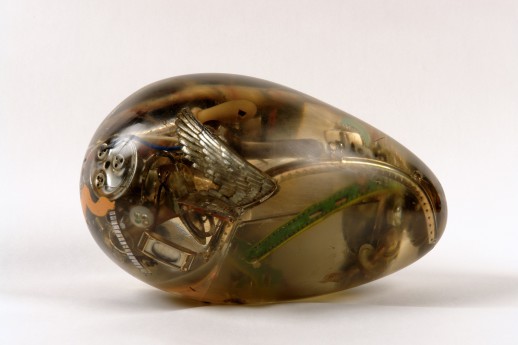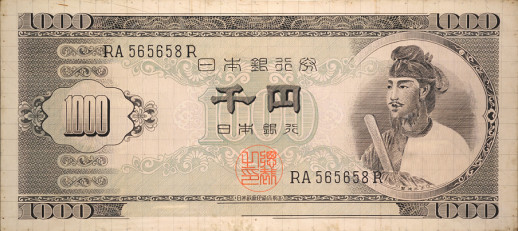Hi-Red Center

In 1994 Alexandra Munroe organized the milestone exhibition “Japanese Art After 1945: Scream Against the Sky” in New York, the first of its kind to introduce a broad survey of modern and contemporary Japanese art to American audiences. Despite coverage alongside contemporary Japanese artists, historic avant-garde collectives like Hi-Red Center and Gutai received little international recognition thereafter. Instead, it was contemporary pop art successors such as Takashi Murakami and Yoshitomo Nara that began their overseas boom in the mid-to-late nineties. These relatively new artists who became hot topics in the U.S. and Europe wowed international audiences with their new brand of strategic pop art, soon branding themselves with conceptual terms such as “Superflat” across the international art scene.
Of course Yoko Ono, an associate of Hi-Red Centre and Fluxus, has stood out as a key figure in the twentieth-century, but she has spent decades living and working in the U.S.. More recently, Yayoi Kusama began receiving real recognition in the 2000s, though this was not the case earlier on. There was the “Art, Anti-Art, Non-Art: Experimentations in the Public Sphere in Postwar Japan, 1950-1970” exhibition held at the Getty Museum in 2007, but this treatment was certainly an exception and not the rule. However, the good news is that since the hype surrounding the infamous Murakami and Nara et al. has begun to abate, the work of postwar avant-garde veterans has been coming back into focus. In 2012, the Blum & Poe gallery in Los Angeles held a Mono-ha group exhibition that appeared to set the scene for two blockbuster shows on Japanese art to follow: “Tokyo 1955–1970: A New Avant-Garde” organised by The Museum of Modern Art (MOMA), New York in 2012, and “Gutai: Splendid Playground,” shown at the Guggenheim Museum, New York in 2013.
The recent surge of interest in the historic avant-garde has not been limited to overseas but has been gaining momentum domestically too, as the latest exhibition at the Shoto Museum of Art in Shibuya Ward demonstrates. “Hi-Red Center: The Documents of “Direct Action”” runs from February 11th to March 23rd, 2014 and offers yet another valuable piece to the puzzle that maps the activity of the postwar artistic avant-garde in Japan. The recent string of comprehensive shows on specific groups and movements in Japan began in 2011 with “Metabolism: City of the Future” at the Mori Art Museum, soon followed by “GUTAI – The Spirit of an Era” at the National Art Center, Tokyo in 2012, and then most recently the 2013 exhibition,”Door to Modernity: Jikken Kobo”, at the Museum of Modern Art, Kamakura. Amongst these bigger exhibitions there have been numerous shows at smaller private galleries, and more conventional overviews as well, such as the two part exhibition “Art Will Thrill You!: The Essence of Modern Japanese Art” at The National Museum of Modern Art, Tokyo in 2012.
What is impressive about this latest show—celebrating 50 years since the founding of the Hi-Red Center collective—is the volume and quality of what is on display. As the title suggests, the Hi-Red Center was a group that concentrated on action – happenings and events – rather than the creation of hermetic works or tangible objects. Making an historic exhibition about a relatively unknown group whose extant body of work mainly consists of documentation and paraphernalia rather than art objects is a tough task. This is made yet more difficult when the group in question has just three key members – Jiro Takamatsu, Genpei Akasegawa, and Natsuyuki Nakanishi (each member lent the first kanji character of his name to form the title of the group: Taka=high, Aka=red, Naka=center) – and remained active for only one year, disbanding in 1964.
For the main body of the exhibition, objects that featured in the earlier actions are shown alongside large format black-and-white vintage and new photographic prints. The egg-like resin amalgamations known as ‘Compact Objects’ (1963) that became Nakanishi’s signature creations are shown in the space preceding Takamatsu’s knotted lengths of black rope and Akasegawa’s iconic wrapped objects. Following this, extensive documentation and works featuring the same artist’s famed one thousand-yen note reproductions are displayed. What is on show either side of this is a slightly wider array of works that bookend the more famed pieces, inclusive of works created by members both pre- and post-Hi-Red Center activity.

Akasegawa’s famed one thousand-yen note reproductions are displayed in their varied manifestations throughout the rest of the show, which finally leads to documentation of the trial known as “Thousand-Yen Bill Incident.” It was in January 1964 that Akasegawa was initially indicted on account of his one-sided monochromatic replica notes that he copied in minute detail in a fashion he called ‘superrealism,’ reproducing them for inclusion in numerous works. The grounds for his prosecution was the manufacturing of an item that had the ‘misleading external appearance of currency.’ His defence that the notes were produced as art proved beside the point, for they were still considered to resemble currency regardless of their purpose. After his defence was dismissed in the August 1966 trial, Akasegawa was found guilty in June 1967 and given a three-month suspended sentence. Though he appealed to both the Tokyo High Court and the Tokyo Supreme Court, his sentence was upheld in 1970.
One key piece of documentation on display is Shigeko Kubota’s English-language map of Tokyo that plots the Hi Red Center’s locations of activity throughout the city. Key images of the legendary 1964 “Street Cleaning Event” are also on show. Performed by members fashioning white uniformed coats and gloves, this event was held as a reactionary gesture against the social control and low-impact censorship being enacted by the Japanese government in the lead up to the Olympic events to be held in Japan. They intended to draw attention to the restriction on things like public spitting, which was being discouraged in an attempt to urge the Japanese public to get in line with more respectable, internationally expected social behaviour.
The spirit of Hi-Red Center’s disruptive yet well-humored actions capture what was at the heart of their artistic cause; more than Gutai or any of their other Japanese contemporaries, they were socially reflective, anti-consumerist and focused on a larger humanist cause. Dedicated to shaking up the status quo, they resisted association with an increasingly commoditized art market and concentrated on social intervention. With this in mind, one of the works that stands out as being most poignant and topical in the contemporary climate is their unrealized “Shelter Plan” (1964), presented on the second floor of the exhibit. If seen through to the end, this project would have resulted in the production of personalized nuclear fall-out shelters. In a manner than seems quite telling, it is on this bleak note that the Hi-Red Center initiative seems to come to an abrupt halt. Hereafter the exhibition moves on to present the aftermath of individual works and how the repercussions of their provocative actions are traced.
With the 2020 Olympic bid won by Tokyo just last year, and the third anniversary of the Fukushima Daiichi nuclear disaster looming ahead, there is an uncanny timeliness to this exhibition that leaves you with a sense of unease. Clearly there are many lessons still to be learned from such avant-garde predecessors who tried so fervently to raise the consciousness of the complacent
Jessica Jane Howard
Jessica Jane Howard



